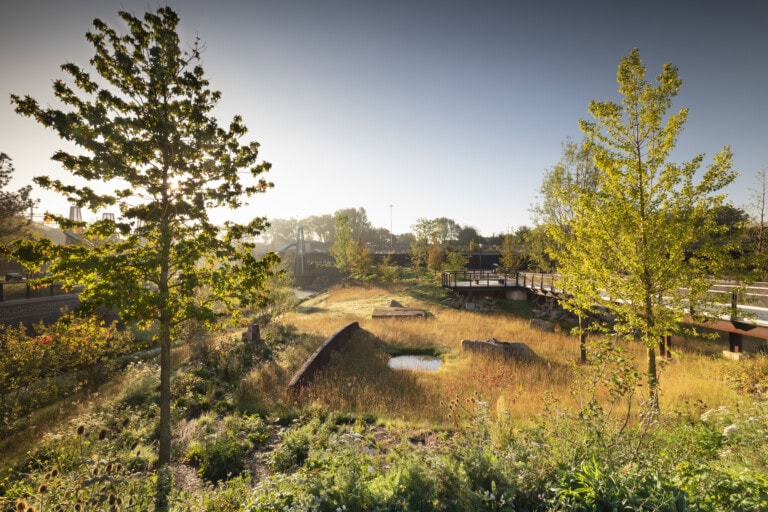Halifax Bus Station
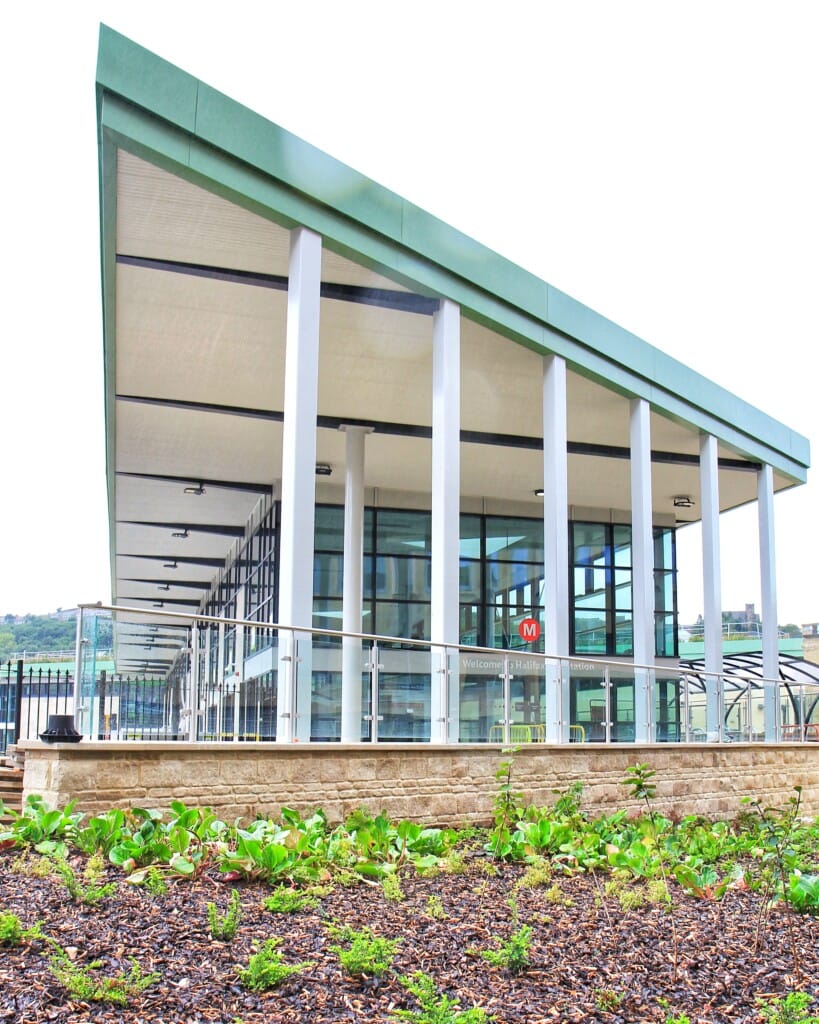
Key Sustainability Objectives/outcomes and Approaches Used
Biodiversity Net Gain
Green roofs were installed to reduce rainwater runoff and increase biodiversity. The green roof to the bus concourse and canopy over the bus boarding areas consists of a mature sedum vegetation blanket, sown with a broad variety of sedums (to reduce load on the large canopy overhangs and concourse roof structure). The sedum consists of 13-17 species, maximising biodiversity within the roof covering. The use of the extensive green roof as a counterbalance to the eaves cantilever to reduce structural frame size was also adopted.
Extensive site planting as part of the landscape design incorporating native species and shrubs with berries.
Photovoltaic (PV) panels have been incorporated onto the south facing ancillary accommodation roof to generate electricity.
Waste material from the site during construction was kept as low as possible including reviewing strategies to limit material export from site. Where possible waste materials were sorted, recycled and diverted from landfill (as far as was reasonably practical).
Provision has been made to enable future electric bus charging.
Dedicated covered cycle parking to promote active travel.
Students of all ages – from primary schools to further education colleges and universities – are visiting the bus station to learn more about the scheme and careers in the industry. This is part of a Green Skills Academy running alongside the construction of the new bus station, helping generate interest and excitement among young people.
Several areas of sustainability were considered:
- Transport, mobility, and active travel to drive local community growth and connectivity
- Biodiversity
- Local employment and apprenticeships
- Natural ventilation for cooling
- Repurposing of existing historical buildings into the overall scheme
- Inclusivity
- The scheme is being used as a case study for students as part of a Green Skills Academy
Lessons Learnt
Site levels – the existing site is on a considerable slope which was a challenge for accessibility and creating step free circulation within the bus station building. Internal lifts, graded planting, retaining walls and gabions externally are used to overcome some of these issues.
Accessibility and wayfinding integrated into the floor finishes – a wayfinding line was designed into the resin floor finish to assist with the orientation of public around the building. This was a challenge in that the line could not be of a tactile quality as is recommended due to trip hazard risks and is installed as a visually contrasting line of the same finish as the surrounding floor.
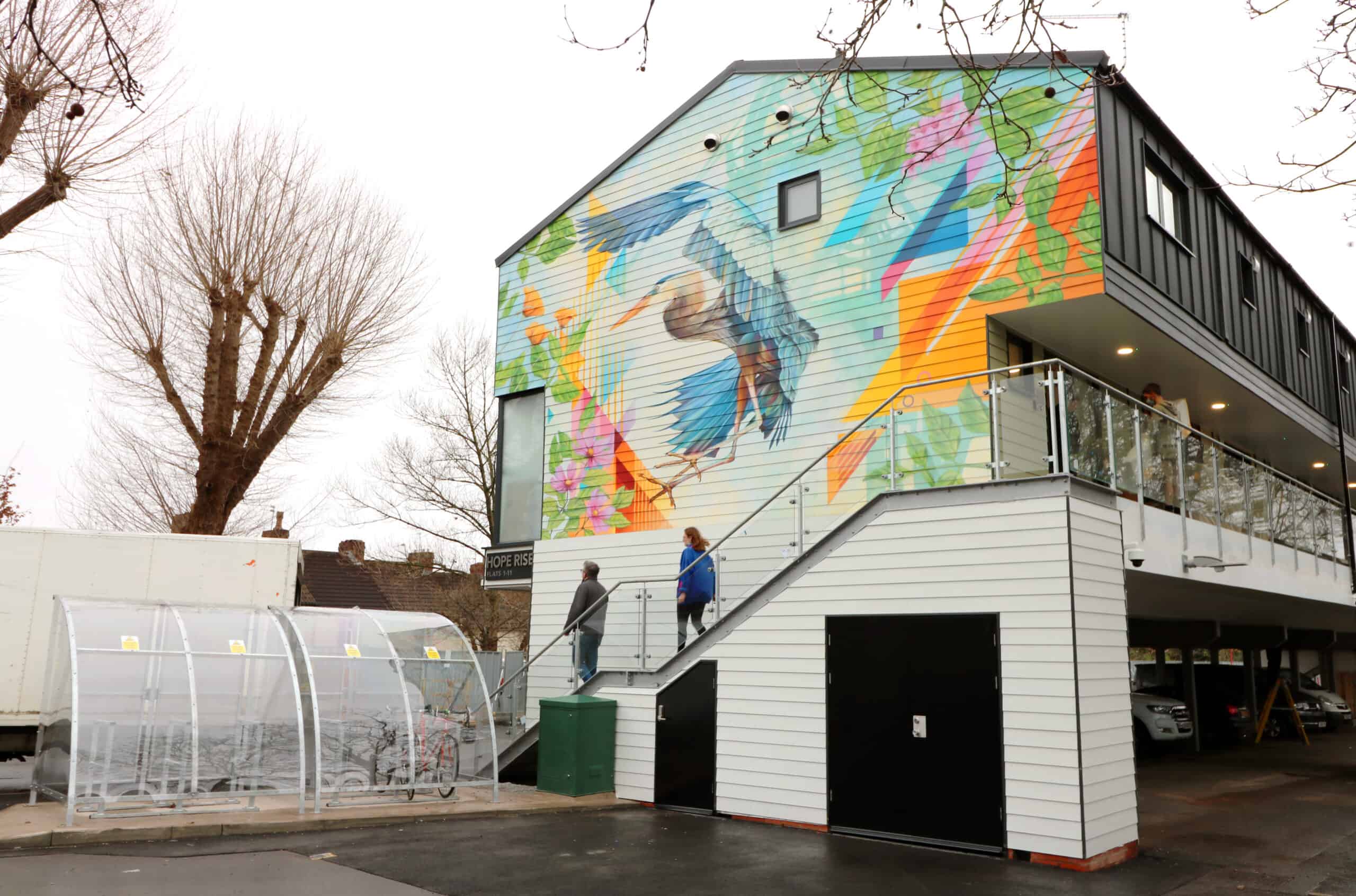
Related
Visual Impact Provision (VIP) – Peak District East
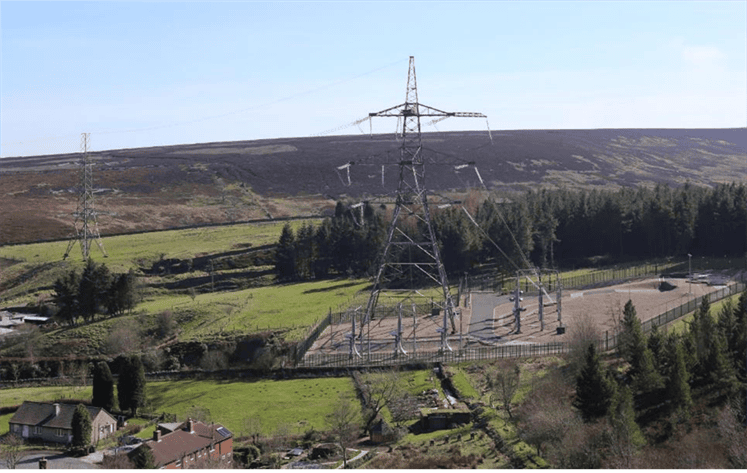
Brighouse Flood Alleviation Scheme
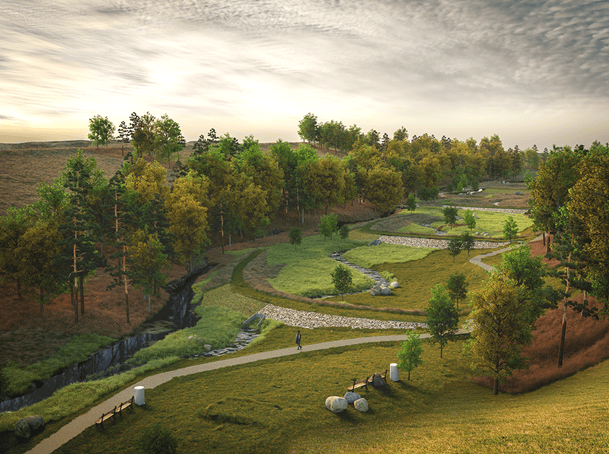
Duxford Old River Floodplain Restoration Project & Habitat Bank

Mayfield
